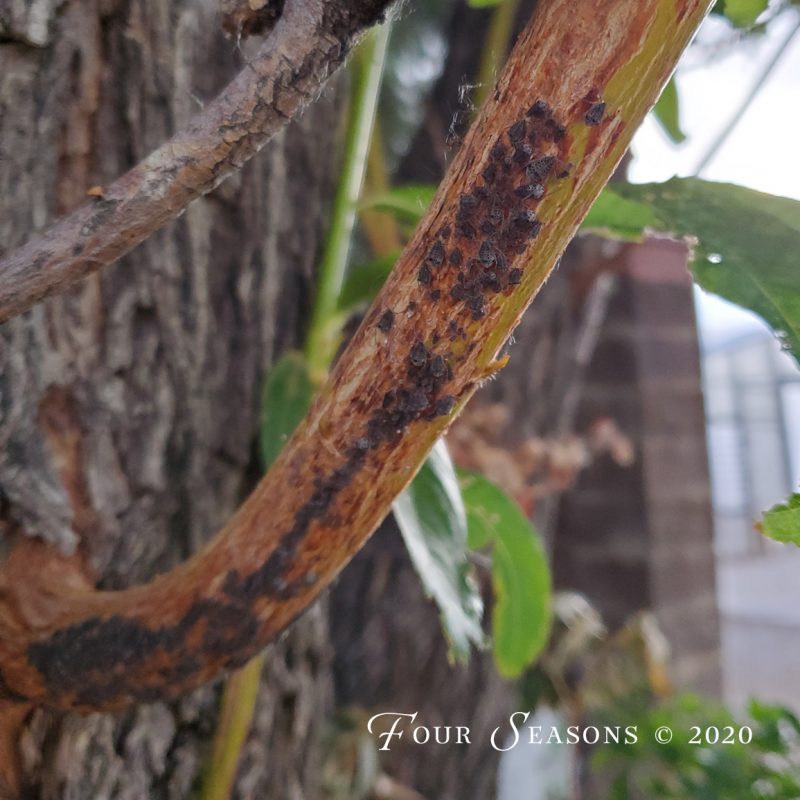If there’s one thing that’s thriving throughout this drier than usual summer, it’s the bugs. Aphids are especially prolific and we’ve seen them on plants that we’ve never seen them on before. Sadly the beneficial insects that would help fight infestations are all but impossible to obtain, but there are some other ways to win the war against these critters this summer.
Aphids aren’t anything new to gardeners but it can sometimes be confusing to spot them because they can come in just about every color of the rainbow and this camouflage hides them well. Generally aphids can be spotted with the naked eye and they come in a wide variety of colors from green to brown to peach to gray to black and often this camouflage hides them well. They can be tiny or large so look carefully and closely at your plants to see if you can spot these little critters.
They reproduce by live birth so you won’t see eggs or larvae and they are extremely prolific. A single aphid can mature from baby to reproducing adult in a mere seven to eight days. Each adult can produce up to 80 offspring within a week’s time, so populations tend to explode, especially when the weather is warm.
Symptoms of aphid infestation include leaves that will curl downwards or cup down, and leaves that will be distorted, wrinkled, or shriveled. They can also be spotted by the sticky residue they leave on leaves or sidewalks under the affected plants.
If you do have aphids there are several treatments available for them. If you prefer an organic solution, try Neem oil. This is an insecticidal oil sourced from the Neem tree and it works by effectively smothering the aphids.
Eight is the new version of the gardeners old friend Sevin and it works well. It’s available in either a spray or dust but I prefer the dust for its staying power over the spray. If you use the dust, be sure to wet the leaves of the plant you are treating before applying as the water will help to keep the dust in place. Although it is not an organic control, it can safely be used in home vegetable gardens, following label directions.
If you need bigger guns to fight your infestation, then our go-to is Annual Tree and Shrub Systemic. I like this product because it works through the system of the plant to fight a wide variety of bugs and also because you only have to use it once a year. The nice thing about a systemic is that it is easily applied to the roots, so if your tree is very large, you don’t have to worry about trying to reach it with a sprayer. Never use a systemic on anything edible though, unless it’s specifically labeled as safe to use on food crops. Permethrin and another old standby, malathion, are also good choices to treat aphid infestations.
If you feel as if the bugs are ready to carry you away, then join the club, but scouting for early detection and treatment is the best way to win the war.

